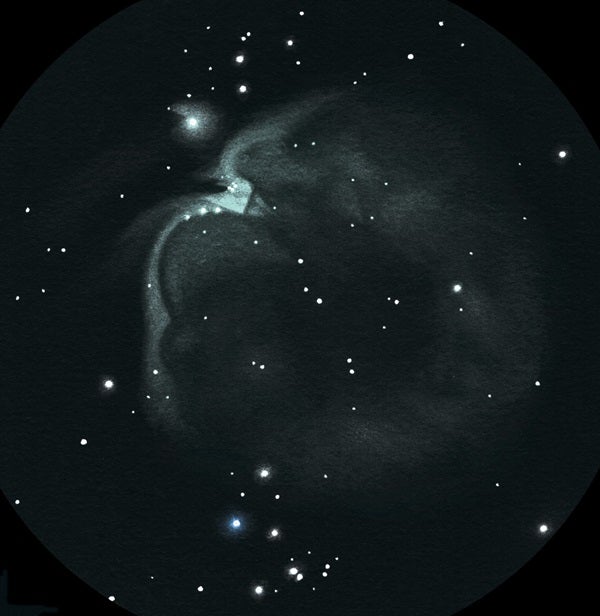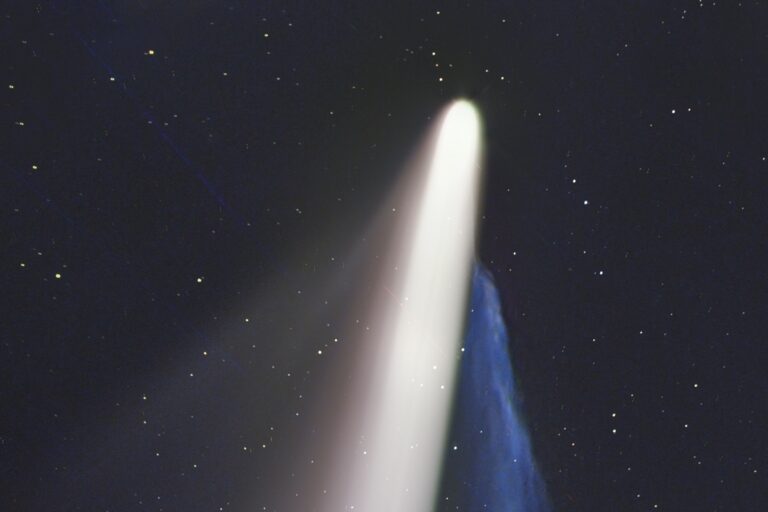And therein lies the problem, especially where the neophyte backyard astronomer is concerned. The camera captures color and faint detail beyond the grasp of the human eye alone. Unaware of that fact, newbies peer into the eyepiece expecting an observatory’s-eye view of the Andromeda Galaxy. Instead, they see nothing more than a grayish, oval-shaped blob. The Orion Nebula doesn’t fare much better. The reds and greens that are so vivid in the Hubble photo are absent. And the Horsehead? It’s nowhere to be seen!
For depictions of what the Orion Nebula, Andromeda Galaxy, Horsehead Nebula, and other celestial objects really look like, you can do no better than refer to an “astrosketch” — in its simplest form, a pencil-and-paper rendering of what the observer sees at the eyepiece.
If you’re a regular Astronomy reader, you may be familiar with our past astrosketching features. During a three-year run that began in September 2009, Editor David J. Eicher penned the monthly piece “Deep-sky Showcase.” It featured deep-sky drawings culled from a logbook he kept over a 36-year span. In January, Eicher passed on the baton to renowned artist Erika Rix, who shares her expertise in the column “Astro Sketching.” (You’ll find this month’s edition on p. 68.) In the January 2012 issue of Astronomy, we ran the all-encompassing five-page article “How to sketch deep-sky objects,” written by Brandon Doyle. I even tackled “Astrosketching 101” in my March 2010 column. In addition, readers often post sketches to our website; check out the gallery at www.Astronomy.com/sketches.
The Internet definitely is an invaluable source of astrosketch galleries. One of the best is “Belt of Venus” (www.beltofvenus.net), the creation of graphic artist Jeremy Perez. From there, take a cyber stroll through the websites of Michael Vlasov (www.deepskywatch.com), Mark Portuesi (http://www.jotabout.com/portuesi/astro), Bill Greer (www.rangeweb.net/~sketcher), and Brandon Doyle (http://brandon-doyle.weebly.com).
A common myth about sketching is that it’s an activity for accomplished artists only. Not so! Your goal isn’t to produce a museum-quality masterpiece. You simply want a pencil-and-paper rendering to place in a logbook for future reference. As with any facet of art, sketching can be learned under the proper guidance.
Several online tutorials will help. Try either of Michael Rosolina’s “Astro Sketching Workshop” slideshows (www.slideshare.net/mrosolina) and Martin Lewis’ PowerPoint presentation (www.skyinspector.co.uk). A pair of sketching how-tos by accomplished astroartist Carol Lakomiak is available via the Royal Astronomical Society of Canada website (www.rasc.ca/astrosketchers-group) — one on sketching the Moon and one on drawing the Sun and deep-space objects.
If you’re a visual learner, these video clips will help. Check out Eicher’s “Sketching from the telescope” (www.Astronomy.com/sketching) and Perez’s “Introduction to Astronomical Sketching” (http://youtu.be/QDC3R39AcSA). Both offer clear step-by-step instructions on sketching deep-sky objects.
Finally, for a complete guide to drawing at the eyepiece, I highly recommend Astronomical Sketching: A Step-by-Step Introduction (Springer, 2007). This handbook, part of the Patrick Moore “Practical Astronomy” series, includes sections by Rix and Perez, as well as Richard Handy, David B. Moody, and Sol Robbins. It’s on my bookshelf; it should be on yours.
Astrosketching is a fun alternative to astroimaging. It’s easier than you might think, it sharpens your visual skills, and it ultimately evolves into a portfolio that will become a valuable lifetime resource. Give it a try!
Questions, comments, or suggestions? Email me at gchaple@hotmail.com. Next month: the invasion of the green laser! Clear skies!











